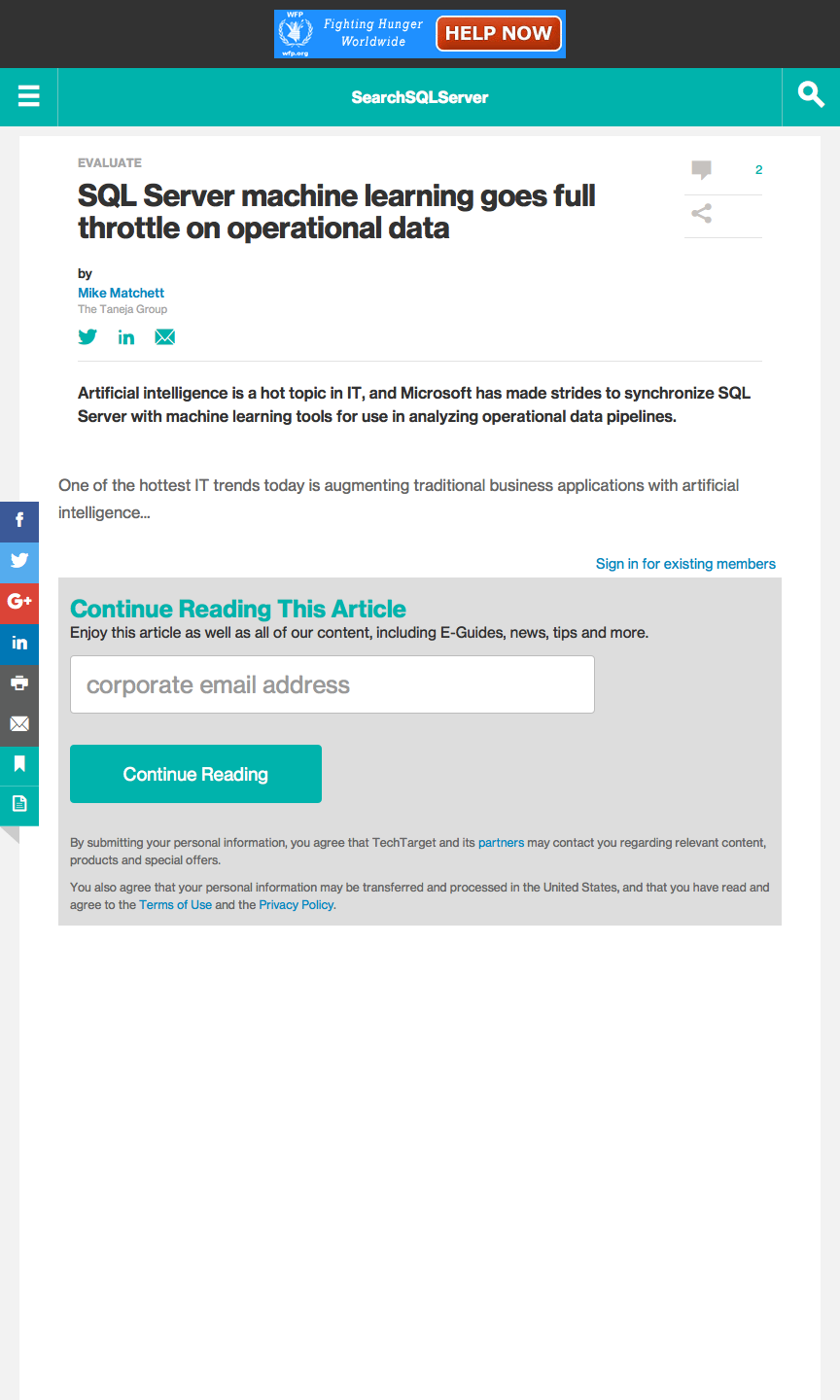SQL Server machine learning goes full throttle on operational data

An IT industry analyst article published by SearchSQLServer.
 Artificial intelligence is a hot topic in IT, and Microsoft has made strides to synchronize SQL Server with machine learning tools for use in analyzing operational data pipelines.
Artificial intelligence is a hot topic in IT, and Microsoft has made strides to synchronize SQL Server with machine learning tools for use in analyzing operational data pipelines.
Mike Matchett
One of the hottest IT trends today is augmenting traditional business applications with artificial intelligence or machine learning capabilities. I predict the next generation of data center application platforms will natively support the real-time convergence of online transaction processing with analytics. Why not bring the point of the sword on operational insight to the frontline where business actually happens?
But modifying production application code that is optimized for handling transactions to embed machine learning algorithms is a tough slog. As most IT folks are reluctant — OK, absolutely refuse — to take apart successfully deployed operational applications to fundamentally rebuild them from the inside out, software vendors have rolled out some new ways to insert machine intelligence into business workflows. Microsoft is among them, pushing SQL Server machine learning tools tied to its database software.
Basically, adding intelligence to an application means folding in a machine learning model to recognize patterns in data, automatically label or categorize new information, recommend priorities for action, score business opportunities or make behavioral predictions about customers. Sometimes this intelligence is overtly presented to the end user, but it can also transparently supplement existing application functionality.
In conventional data science and analytics activities, machine learning models typically are built, trained and run in separate analytics systems. But models applied to transactional workflows require a method that enables them to be used operationally at the right time and place, and may need another operational method to support ongoing training (e.g., to learn about new data).
Closeness counts in machine learning
In the broader IT world, many organizations are excited by serverless computing and lambda function cloud services in which small bits of code are executed in response to data flows and event triggers. But this isn’t really a new idea in the database world, where stored procedures have been around for decades. They effectively bring compute processes closer to data, the core idea behind much of today’s big data tools.
Database stored procedures offload data-intensive modeling tasks such as training, but can also integrate machine learning functionality directly into application data flows. With such injections, some transactional applications may be able to take advantage of embedded intelligence without any upstream application code which needs to be modified. Additionally, applying machine learning models close to the data in a database allows the operational intelligence to be readily shared among different downstream users…(read the complete as-published article there)
